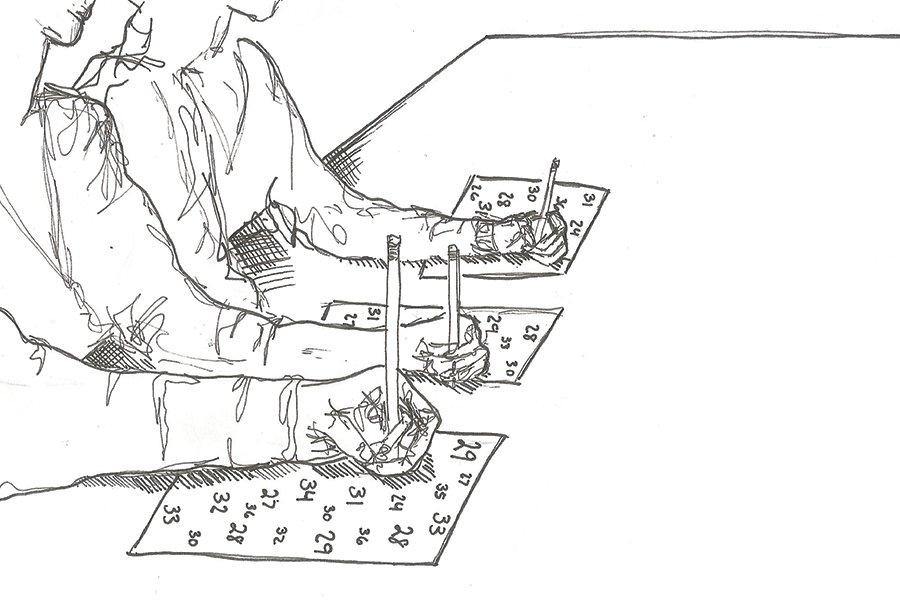Students are more than a score
Last month, the ACT announced that starting next September it will allow students to retake individual sections of the college admissions test. Despite the stated rationale of making standardized tests easier for students, this and similar recent test reforms only obscure a critical point — test scores are an inadequate way of assessing students.
In the past decade, both ACT and College Board, the two major test-making organizations, have introduced several changes to students’ test-taking experiences. In 2005, the SAT added an essay portion and increased the total score from 1600 to 2400 — in 2016, College Board reversed both changes and removed the SAT’s guessing penalty as well. Controversially, College Board announced plans to introduce an adversity score with students’ test results, only to scrap the plan after widespread backlash.
College-entrance exam ACT announced Tuesday that students who have already taken the entire exam once will have the option to retake specific sections of the ACT test instead of taking the whole thing over again https://t.co/NrS3xvPaBs
— CNN (@CNN) October 10, 2019
As with the recent ACT test change, test-makers have justified such reforms as making test day easier for students. Another common rationale is that such changes will more accurately assess students’ academic potential. This assumption is both deceptive and harmful.
College admission exams have consistently featured test score disparities along racial and ethnic lines. In 2015, Blacks and Latinos scored on average 77 to 170 points lower than whites and Asians on the SAT math section. The ACT demonstrates a similar racial variance: the 2016 test exhibited a score gap of .87 standard deviations between Black and white test-takers, compared to the 2015 SAT’s gap of .88 standard deviations.
SAT is dropping its “adversity score” meant to level the college admissions playing field https://t.co/KHFjYWWzwp pic.twitter.com/6mlECVl7sz
— TIME (@TIME) August 27, 2019
The changes proposed in the last few years indicate a growing realization that test scores, rather than creating a meritocratic means of evaluation, instead provide a deceptive cover for entrenched socioeconomic disparities.
According to a Georgetown University Center on Education and the Workforce study, for example, if colleges only determined admissions based on these scores, admitted classes would be both richer and whiter. The solution to this, however, is not to tinker with the tests but to de-emphasize their importance significantly.
Test preparation has become its own industry, and the increasing costs associated with standardized test prep only underscore the power of wealth in achieving a satisfactory score. Tutoring, both individually and in groups, can range from $1,000 to $9,000 test prep packages. Even buying test prep books places a financial burden on families, whereas those with the resources to hoard test preparation material can, with each dollar spent, “invest” their way to a 1600 or 36.
Some testing experts think new SAT math section may reinforce race disparities https://t.co/UYpmYdQMgq pic.twitter.com/oVGnjylWd4
— Reuters (@Reuters) September 21, 2016
Regardless of what form they take, these tests are bound to fail at their stated purpose. Moreover, some studies have shown little difference in the college graduation rates or grade point average of college applicants who submit standardized test scores versus those who do not. To their credit, some universities have already begun to scrap standardized testing requirements for admission. By reviewing applicants’ essays, extracurricular histories and high school grades, colleges can obtain a student profile free from the inherent biases featured in standardized tests.
The college application process is needlessly competitive, pitting students against each other in a mad rush for the highest scores, the most extracurriculars and the most compelling personal narrative. Instead of bragging about their test scores and touting how many students they reject, universities should instead focus on cultivating unique campus cultures to attract college applicants. If schools take this approach, both schools and their students will be better off for it.
Your donation will support the student journalists of Tulane University. Your contribution will allow us to purchase equipment and cover our annual website hosting costs.




Saucy Organism • Nov 26, 2019 at 12:40 am
What are the alternatives then? Also, I know with SAT there are tons more online resources to help students with accessibility. Will this help?
Good article nonetheless.